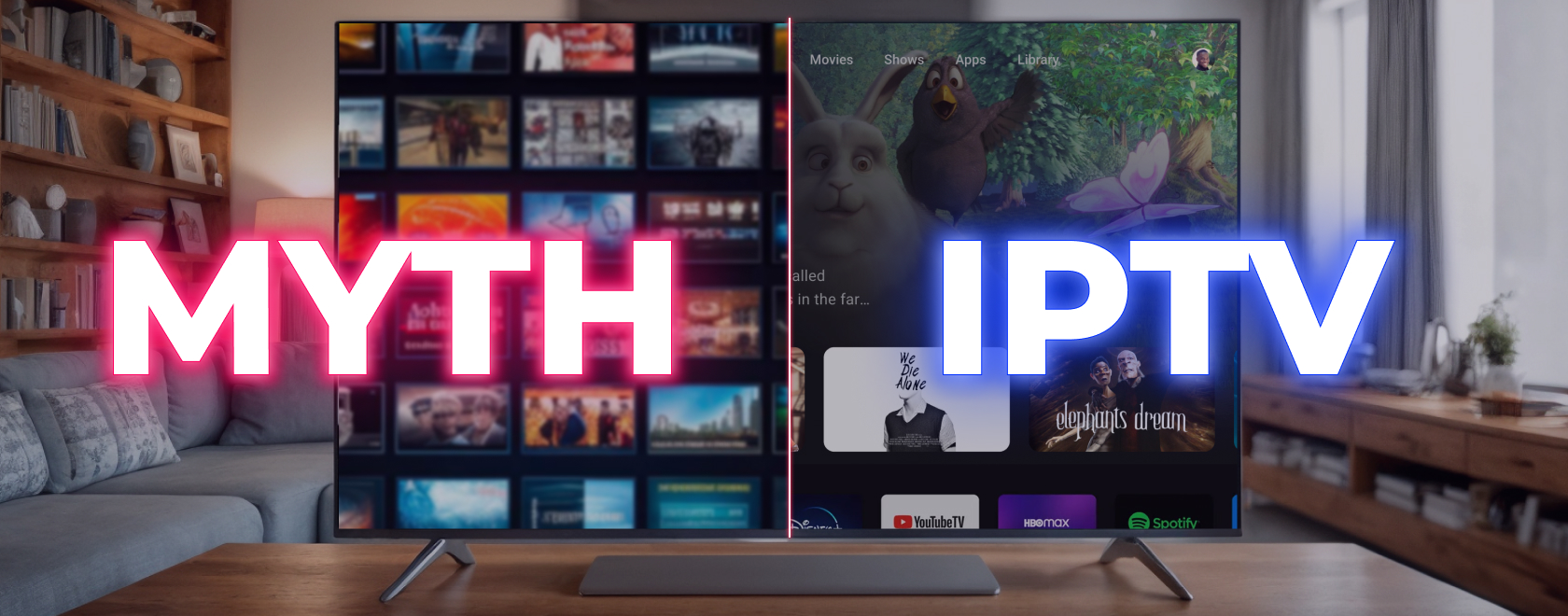IPTV has become a solid, mainstream alternative to cable and satellite TV. Yet despite its growing popularity, there’s still plenty of confusion surrounding the technology. From setup concerns to legal misunderstandings, IPTV is often misunderstood — especially by those who haven’t tried it yet. In this article, we’ll break down seven of the most widespread IPTV myths and uncover what’s actually true.
Myth 1: IPTV Is Complicated and Only for Tech Experts
This is one of the biggest IPTV setup misunderstandings, and it couldn’t be further from the truth. Today’s IPTV services are designed for everyday users — not engineers. In most cases, setup takes just a few clicks, and the interfaces are clear and intuitive. If you’re using a set-top box or a media player like Android TV or Google TV, it’s often plug-and-play. Many providers even offer ready-made apps that load playlists automatically, with minimal configuration. And if you do run into trouble, customer support is usually just a message away — no tech jargon required.
Myth 2: You Need Ultra-Fast Internet
This myth stems from IPTV’s early days, when internet speeds were much lower. But now, smooth streaming doesn’t require a gigabit connection. For most people, 10–15 Mbps is enough for HD streaming, and about 25 Mbps will cover 4K. These speeds are standard in most cities. What matters more is connection stability, not raw speed. Even the fastest internet won’t help if your Wi-Fi drops out every five minutes.
Myth 3: IPTV Equals Piracy
This is one of the more damaging misconceptions. Is IPTV legal or not? The answer depends entirely on the provider. Legal IPTV services operate under proper licenses, offer access to official content libraries, and work directly with broadcasters. What you want to avoid are shady services promising “all channels for a few bucks” — those are likely fake IPTV services. There are plenty of reputable IPTV providers out there, many of them run by well-known telecom brands.
Myth 4: IPTV Only Works on a TV
Not true. IPTV is far more flexible than traditional TV. Most services today support multi-device access, meaning you can watch content on your smartphone, tablet, laptop, or even in a web browser. Whether you’re in the kitchen, commuting, or just lying in bed, IPTV lets you tune in anywhere — no TV required.
Myth 5: You Must Own a Smart TV
A smart TV definitely makes things smoother, but it’s not a must-have. Any screen with internet access will work just fine. Even older TVs can become IPTV-capable with an inexpensive HDMI stick or digital receiver. There are many ways to connect, and almost all homes already have the basics needed for IPTV.
Myth 6: IPTV Is Always Laggy or Glitchy
While buffering and freezing can happen, they usually point to issues with your connection or hardware — not the IPTV itself. A reliable router, good bandwidth, and a properly configured setup (like using a 5GHz Wi-Fi band or Ethernet) will deliver a stable experience. Modern IPTV apps also support stream quality optimization, channel switching without delays, and smart buffering to avoid interruptions. If you’re seeing “blocky” video or lag, it’s time to check your Wi-Fi — not blame IPTV.
Myth 7: IPTV Is Expensive
Like with most streaming services, the cost of IPTV varies by provider and plan. Yes, there are premium subscriptions with massive channel lineups, VoD, and extra features — but there are also affordable IPTV plans with basic offerings. Many services let you use one account across multiple devices, which makes it cost-effective for families or shared households. Plus, there’s no need for satellite dishes, extra cables, or bulky hardware — reducing your overall expenses.
As with any evolving technology, IPTV has picked up its share of internet TV rumors — but most of them simply aren’t true anymore. Today, IPTV is a reliable, affordable, and highly customizable way to enjoy TV and movies across all your devices. Choose a trusted provider, make sure your internet is stable, and embrace the convenience of modern streaming.
IPTV isn’t the future — it’s already a part of our digital lifestyle. Don’t let outdated IPTV subscription problems or misinformation hold you back from a better way to watch.
